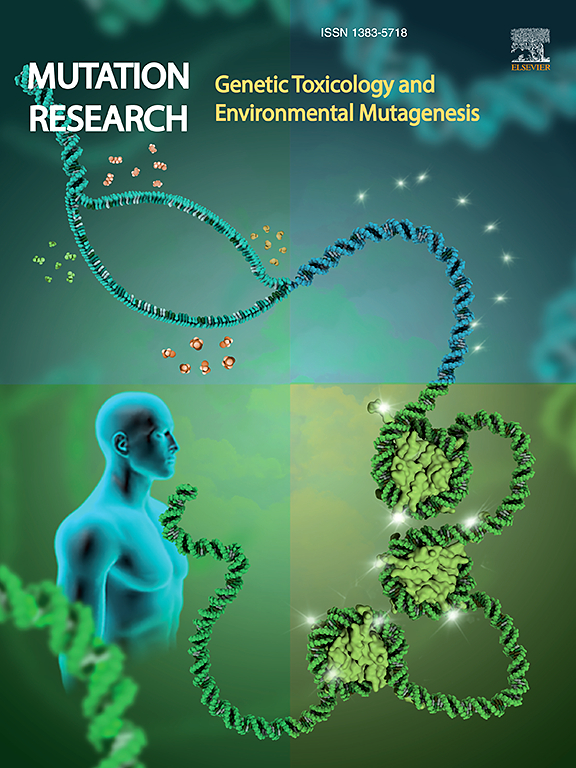Perchloroethylene: Genotoxicity and cytotoxicity in human peripheral blood lymphocytes in vitro
IF 2.5
4区 医学
Q3 BIOTECHNOLOGY & APPLIED MICROBIOLOGY
Mutation research. Genetic toxicology and environmental mutagenesis
Pub Date : 2025-08-26
DOI:10.1016/j.mrgentox.2025.503884
引用次数: 0
Abstract
Perchloroethylene (PCE), a widely used solvent, is classified as a probable human carcinogen. We have studied its genotoxicity, clastogenicity, and cytotoxicity in cultured human peripheral lymphocytes (HPLs). Cytogenetic tests used were the chromosomal aberration (CA), sister chromatid exchange (SCE), mitotic index (MI), replication index (RI), and micronucleus (MN) assays. Positive results were obtained with each of these assays: a dose-dependent increase in CA, a significant increase in SCE, a significant decrease in MI and RI, and an increase in MN frequency at the highest concentration of PCE. These results demonstrate that PCE induces significant genotoxic and clastogenic effects in human peripheral lymphocytes.
过氯乙烯:体外对人外周血淋巴细胞的遗传毒性和细胞毒性
全氯乙烯(PCE)是一种广泛使用的溶剂,被列为可能的人类致癌物。我们研究了其在培养的人外周血淋巴细胞(HPLs)中的遗传毒性、致裂性和细胞毒性。使用的细胞遗传学检测包括染色体畸变(CA)、姐妹染色单体交换(SCE)、有丝分裂指数(MI)、复制指数(RI)和微核(MN)测定。这些实验均获得阳性结果:CA呈剂量依赖性增加,SCE显著增加,MI和RI显著降低,在PCE浓度最高时MN频率增加。这些结果表明,PCE对人外周血淋巴细胞具有显著的遗传毒性和致裂作用。
本文章由计算机程序翻译,如有差异,请以英文原文为准。
求助全文
约1分钟内获得全文
求助全文
来源期刊
CiteScore
3.80
自引率
5.30%
发文量
84
审稿时长
105 days
期刊介绍:
Mutation Research - Genetic Toxicology and Environmental Mutagenesis (MRGTEM) publishes papers advancing knowledge in the field of genetic toxicology. Papers are welcomed in the following areas:
New developments in genotoxicity testing of chemical agents (e.g. improvements in methodology of assay systems and interpretation of results).
Alternatives to and refinement of the use of animals in genotoxicity testing.
Nano-genotoxicology, the study of genotoxicity hazards and risks related to novel man-made nanomaterials.
Studies of epigenetic changes in relation to genotoxic effects.
The use of structure-activity relationships in predicting genotoxic effects.
The isolation and chemical characterization of novel environmental mutagens.
The measurement of genotoxic effects in human populations, when accompanied by quantitative measurements of environmental or occupational exposures.
The application of novel technologies for assessing the hazard and risks associated with genotoxic substances (e.g. OMICS or other high-throughput approaches to genotoxicity testing).
MRGTEM is now accepting submissions for a new section of the journal: Current Topics in Genotoxicity Testing, that will be dedicated to the discussion of current issues relating to design, interpretation and strategic use of genotoxicity tests. This section is envisaged to include discussions relating to the development of new international testing guidelines, but also to wider topics in the field. The evaluation of contrasting or opposing viewpoints is welcomed as long as the presentation is in accordance with the journal''s aims, scope, and policies.

 求助内容:
求助内容: 应助结果提醒方式:
应助结果提醒方式:


